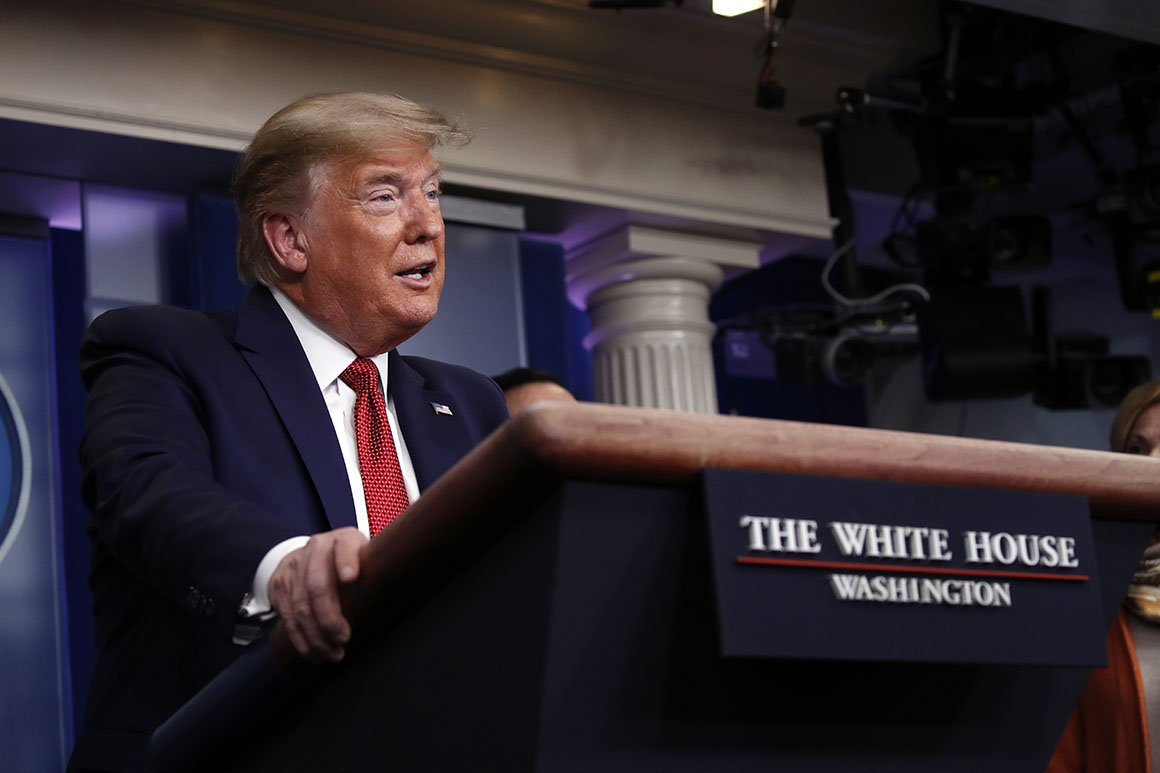
In the letter, released following the president’s teleconference with governors on Thursday, Trump writes that the new guidelines would incorporate data gleaned from „expanded testing capabilities“ to “monitor the spread of the virus throughout the country.”
Based on that data, the administration would categorize counties as „high risk, medium risk and low risk.“ This would allow areas less affected by the virus to put in place looser restrictions than ones that have been ravaged by the illness.
It’s uncertain how effective such labels might be in containing the virus, however, because asymptomatic carriers could move from region to region undetected. Just this week, the administration urged anyone who’d recently been in New York City, the new epicenter of the U.S. outbreak, to self-quarantine after health experts raised questions about whether people fleeing the city were transmitting the virus to other locales.
And before more governors began to order the closure of „nonessential“ businesses like bars and restaurants in the name of social distancing, some state leaders complained that a patchwork of different guidelines in neighboring states undermined their more stringent restrictions.
In a coronavirus task force briefing at the White House on Thursday evening, Dr. Deborah Birx, the administration’s coronavirus response coordinator, brushed aside concerns that county-by-county criteria would be easily permeable. Birx said that part of the current 15-day push for social distancing was to message the necessity of social distancing to contain the spread while encouraging “highly responsible behavior between counties.”
“I think the American people can understand that, that they will understand where the virus is — because we’ll have the testing data — and where it isn’t, and make sure that they’re taking appropriate precautions as they move in and out of spaces,” she explained to reporters.
Asked whether, practically, the guidelines could prevent residents from a high-risk county from traveling to a low-risk county and potentially transmitting Covid-19, Birx punted to local officials.
“These are dialogues that the federal government has to have with state and local governments, because state and local governments make those decisions,” she replied.
Trump’s letter did not set a date for publishing or implementing the county-by-county guidelines. But he made no mention of the Easter deadline he spoke of Tuesday, when he said he’d like to have the country “opened up and raring to go” by the holiday.
The omission might indicate he’s heeding the advice of medical experts, who’ve warned it’s still premature to lift the current nationwide guidelines.
At the White House, Birx said that the timing of the new criteria would depend on how quickly officials were able to gather the granular testing data they need.
Trump’s latest proposal is also a sign of rising confidence in the testing rollout among members of the president’s coronavirus task force — and of the administration’s hopes to use that testing data in a more strategic manner.
„With each passing day, our increasingly extensive testing capabilities are giving us a better understanding of the virus and its path,“ the president wrote Thursday, adding that the new information „will drive the next phase in our war against this invisible enemy.“ He plugged the testing ramp-up once again in Thursday‘s briefing, pegging the new approach to expanded testing access.
But Birx, who served as the U.S. global AIDS coordinator before joining the coronavirus task force, said that the county-by-county approach was one she‘d seen used to great success in containing the spread of HIV/AIDS in Africa.
“What we‘re trying to do is to utilize a laser-focused approach rather than a generic horizontal approach. And I think in the 21st century we should be able to get to that,” she said, noting later that public health officials in the U.S. had so far been able to “very well define“ different outbreaks and clusters of coronavirus.
Birx continued: “Why am I confident that we can do that? Because we do that in sub-Saharan Africa right now for HIV. That‘s how we‘re stopping the epidemic there. So we‘ve done it. We‘ve done it in resource-limited settings. So I do believe we can transpose that approach here to the United States and be able to have — we have granular data down to a GPS coordinate of a site of a clinic and hospital. We think that same thing can be done in the United States.”
Source: politico.com
See more here: news365.stream






